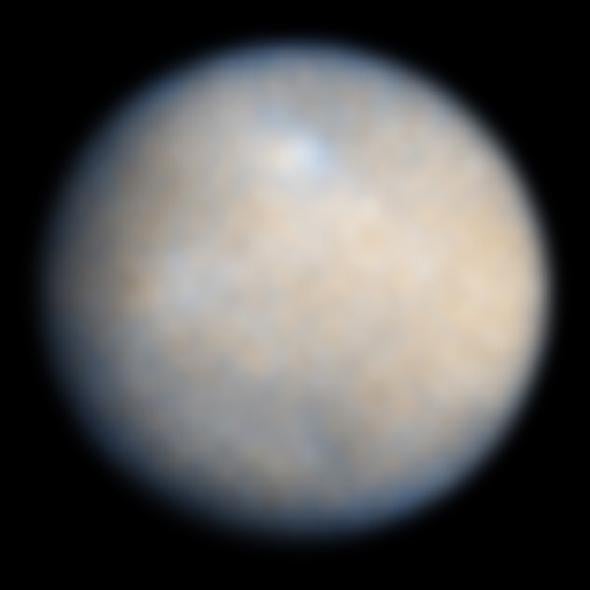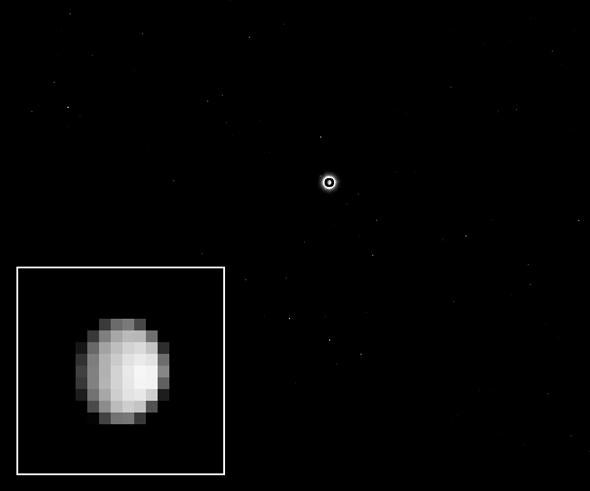That picture may not look like much at first glance, but it’s actually very exciting: That is Ceres, the largest asteroid in the solar system, as seen by the Dawn spacecraft, currently on its way there for a rendezvous next spring!
This picture was taken by Dawn’s framing camera when it was 1.2 million kilometers (about 740,000 miles) from Ceres on Dec. 1, 2014. It’s a calibration image; a long exposure was used so stars could be seen, and Ceres was overexposed. A close-up is shown in the inset; the asteroid is about nine pixels across.
Dawn launched in 2007 and went first to Vesta, one of the largest asteroids in the main belt between Mars and Jupiter. It spent a year there, then moved on toward Ceres. It employs an ion drive, a very low-thrust but extremely high-efficiency engine. The acceleration is very low, but can be kept going for months at a time, so the spacecraft can reach pretty decent speeds.

Photo by NASA, ESA, J. Parker (Southwest Research Institute), P. Thomas (Cornell University), and L. McFadden (University of Maryland, College Park)
Ceres is an interesting beast: It’s not just a big rock but is known to have water ice on it and in it. It’s about 950 km (590 miles) across, and so far from Earth (more than 200 million km at its closest) that our best pictures show it as a fuzzy disk. Dawn will change that: It will orbit Ceres and—judging from its views of Vesta—take incredible high-resolution images as well as employ other scientific instruments to take the asteroid’s measure.
Dawn should arrive at Ceres in March/April of 2015, and as it approaches the asteroid will swell large in its cameras. We’ll be getting better and better images as it does. Nine pixels isn’t much … but it’s a great start.
